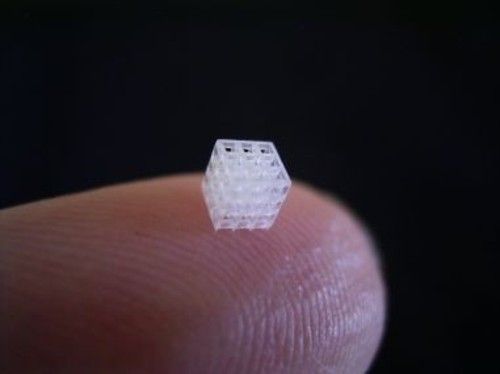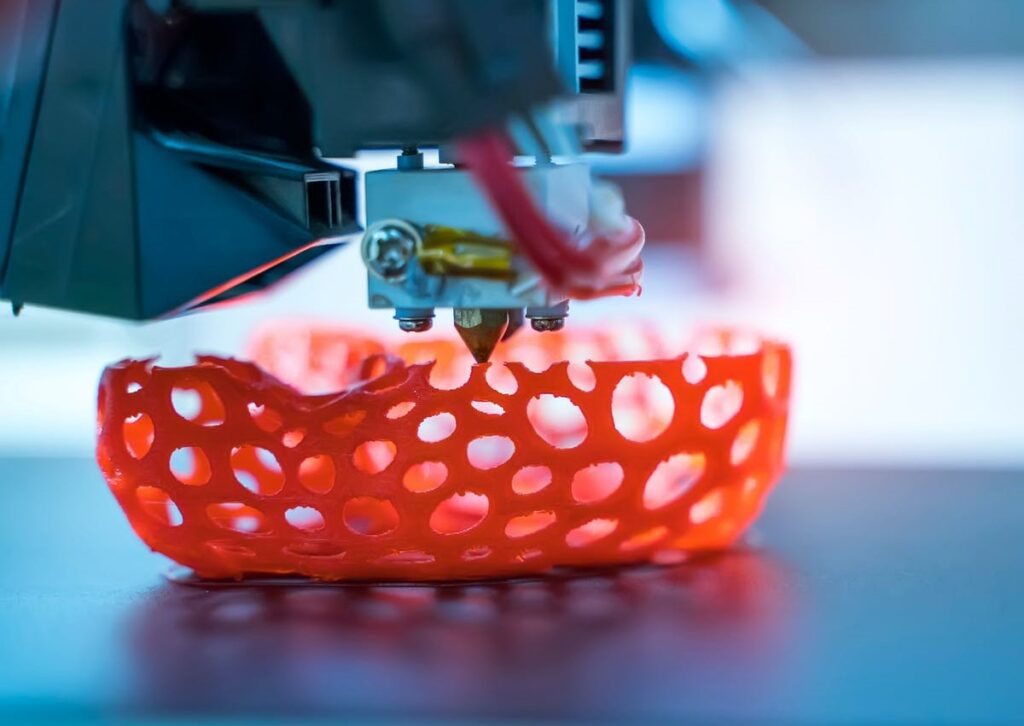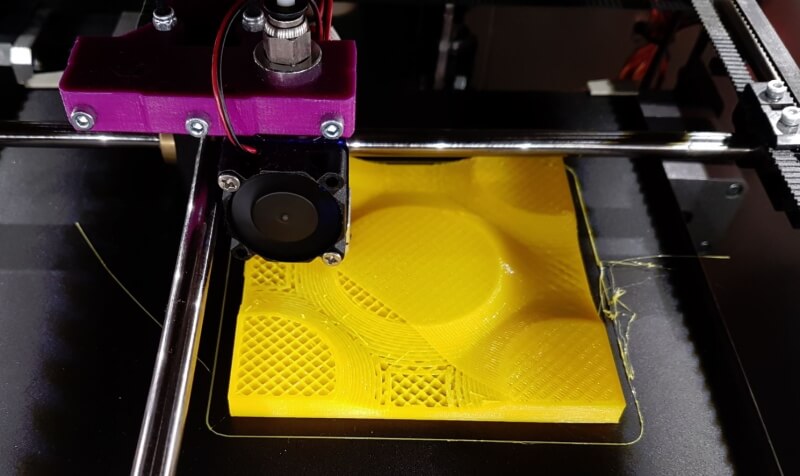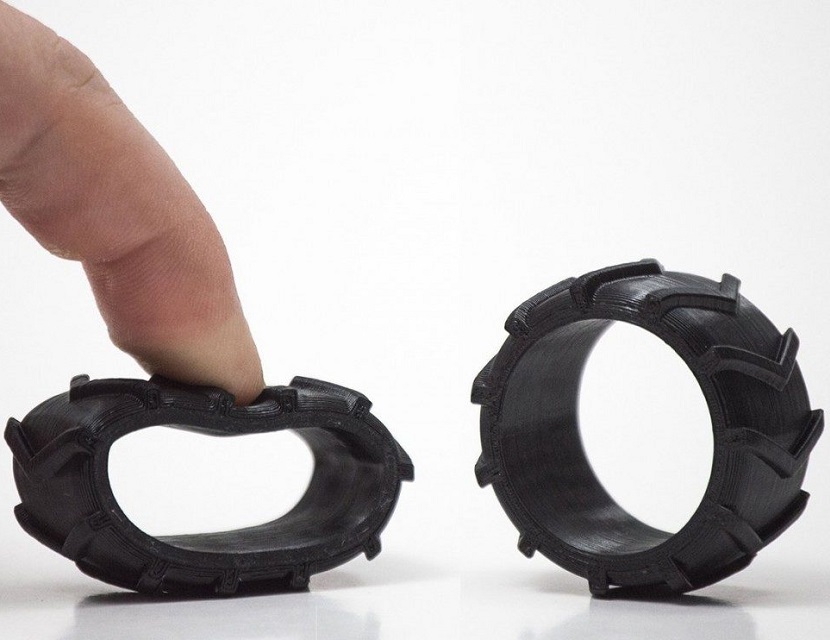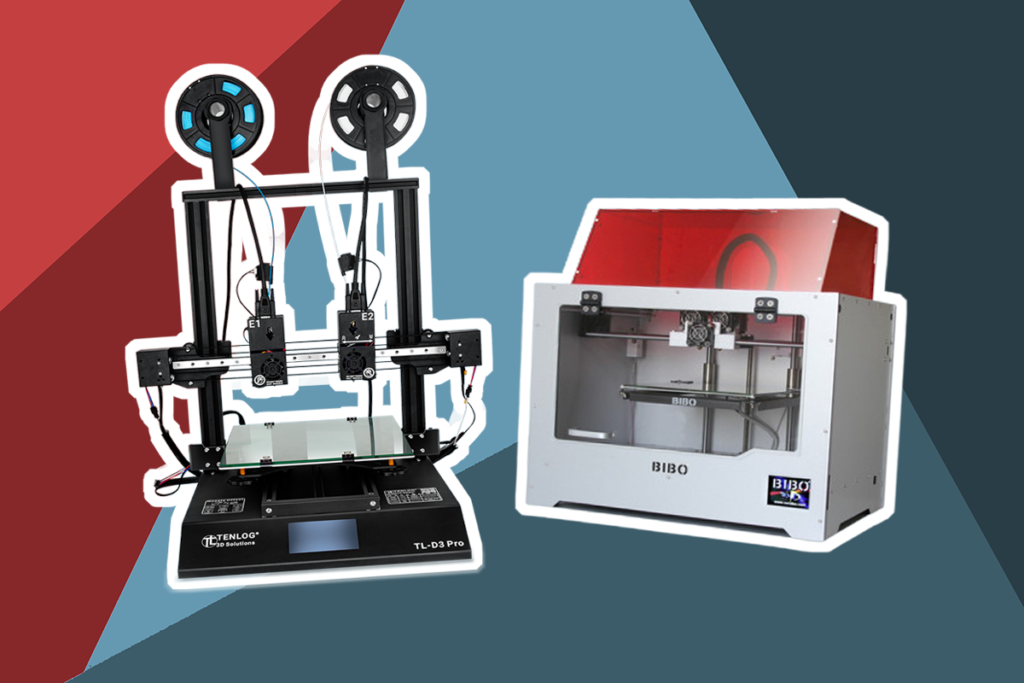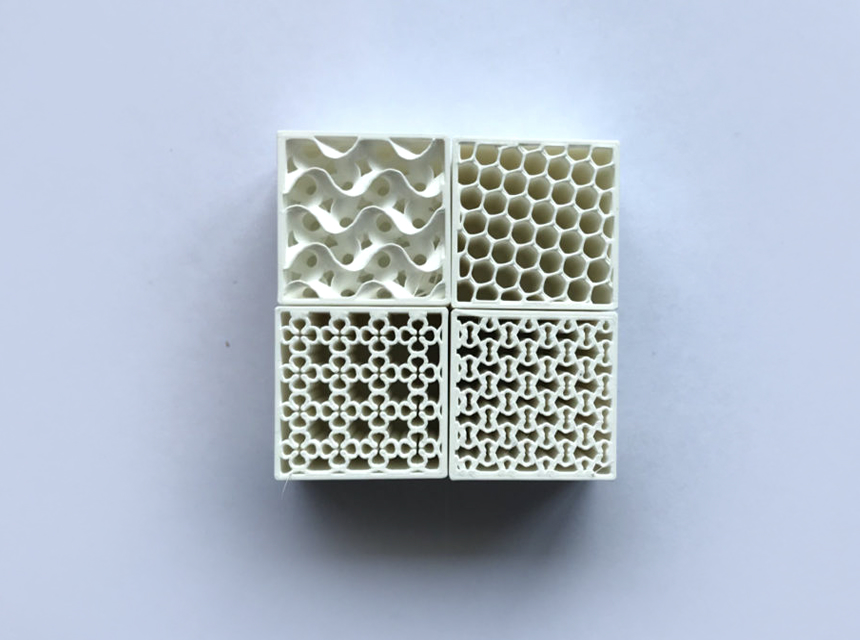

Filament 3D printing technologies like Fused Deposition Modeling (FDM) and Fused Filament Fabrication (FFF)) is often used in the industrial, home, and DIY printing sectors. The process was developed in the late 1980s and is one of the oldest 3D printing processes. But are there any differences between FDM and FFF printing technologies?
They’re quite similar (or the same) printing technologies, but the different names arose due to trademark conflicts. Stratasys owns FDM technology, while FFF was coined by the open-source project “RepRap.”
However, there are still differences between these printing methods. Therefore, this FFF vs. FDM 3D printing comparison article will compare the printing technologies, starting from how each process works to the general differences, and then dwelling on the comparative study of these technologies.
FDM is short for fused deposition modeling Trusted Source What is FDM (Fused Deposition Modeling) 3D printing? Explained by Hubs | Hubs Interested in learning the basics of FDM 3D printing? In this article, we explain why this technology is an efficient and cost-effective choice for rapid prototyping and other applications. www.hubs.com . It’s a relatively expensive 3D printing technology that uses a simple process. The 3D model is designed using computer-aided design (CAD) software and is created by layering a melted thermoplastic material extruded from a nozzle on the printing plate.
This technique works by successive deposition of plastic or composite material layers. First, the material is heated and melted. It is then deposited by a printhead, guided by a motor, following a path defined by a CAD (computer-aided design) file.
The model is therefore built layer by layer, from base to top. To print some parts, it may be necessary to insert design supports. These are predefined in the design file.
Specific materials have been developed for the supports, such as water-soluble polymers. It is then possible with printers having several extrusion nozzles to print the object and its supports at the same time.
The main advantages of FDM technology lie in its simplicity of use, the low price of certain printers, and the low production cost per part. The applications are numerous and open to a large number of users, including individuals, artists, manufacturers, or even design, architecture, and design offices. This technology, therefore, continues to develop.
Also, the best fastest 3D printers on the market use FDM technology. As a result, it is possible to print larger objects. The materials offered are more numerous and at affordable prices. Many filaments are also tailor-made for specific – often industrial – uses.
The main drawback of the process is the precision which is not always suitable or appropriate for its application. This has the lowest resolution and accuracy compared to other processes such as SLA (stereolithography), SLS (selective laser sintering), or inkjet techniques. However, it is possible to compensate a little for this imperfection and obtain a better finish with chemical or mechanical polishing processes.
FFF, the short for Fused Filament Fabrication, is the same as FDM printing technology, except for the name. It is an un-trademarked form of FDM printing that consists of depositing material layer by layer using a polymer filament which is melted (thermoplastic) through a heating block and then deposited on the plate. The part is thus built step by step, layer by layer.
The printing is done in an enclosure that can print parts of 500x500x500 mm maximum. It is heated up to 70 degrees Celcius or 160 degrees Fahrenheit, limiting the phenomenon of warping and shrinkage. In addition, some 3D printers have two nozzles and can therefore produce models with two different materials.
These nozzles can reach temperatures of 420 degrees Celcius or 800 degrees Fahrenheit and thus make it possible to work with a wide variety of plastic filaments. In addition, the print volume is very large and makes it possible to produce large volume parts.
FFF is one of the most widespread and cost-effective technology on the market. Like FDM, it uses various materials and has low follow-up costs. In principle, almost all thermoplastics are suitable for the process.
The drawback is that very thin parts can warp with the ABS material. Also, the accuracy and resolution that can be achieved are low compared with other printing technologies. Also, models are not printed solid but with an infill structure.
Both technologies are quite similar (or the same) but for the different names. FDM technology is owned by Stratasys, while FFF was coined by the open-source project “RepRap.” However, Stratasys’ FDM printing is regarded as more professional Trusted Source FDM 3D Printing: Desktop vs. Industrial | Xometry Europe This article is aimed at comparing the main segments of FDM 3D printing i.e, consumer (desktop) and industrial (professional). xometry.eu . Therefore, it is used in the industrial sector, unlike FFF, which is often referred to as desktop printing which hobbyists mostly use.
Both processes use polymeric plastic filaments. These filaments are subjected to a melt and extrusion process and end up on the work plate, after which a 3D model of the object to be reproduced is divided into sections to facilitate its layered composition. At each completed layer, the z-axis of the printer rises and continues to deposit the subsequent filaments until the complete object is created.
As soon as it comes out of the extruder, the material solidifies immediately by binding to the underlying material layer and thus forming a single structure.
The differences between the two printing technologies are simply in the naming. The processes are similar as the FDM technology is owned and trademarked by Stratasys while the FFF is an open-source reproduction.
S. Scott Crump, a co-founder of the 3D printer manufacturer Stratasys, developed the 3D printing process in 1988. In the 1990s, when it began to be used commercially, Stratasys trademarked the technology with the name Fused Deposit Modelling (FDM).
However, the patent for the 3D printing process expired in 2009 Trusted Source How expiring patents are ushering in the next generation of 3D printing – TechCrunch Although there is still a lot of hype surrounding 3D printing and how it may or may not be the next industrial revolution, the cost of printing continues to drop while the quality of 3D prints continues to rise. This development can be traced to advanced 3D printing technologies becoming accessible due to the expiration of key patents on pre-existing industrial printing processes. techcrunch.com , and since then, other developers have also had the opportunity to use the technology. This is how the open RepRap project, which uses the method, came about. The problem is that Stratasys has continued to trademark the name Fused Deposition Modeling or FDM.
Thus there is a name for the 3D printing process, which is also not protected. There are now a number of commercial manufacturers and open source projects that rely on the process. These are then designated as Fused Filament Fabrication or FFF to avoid conflict with the manufacturer Stratasys. However, the basis of the technique is always the same.
But, all companies and projects still refine the FFF process, combine it with other techniques and create variations. This is where the difference comes.
Despite the similarities between these processes, a comparative study conducted by Pragmatek Consulting highlighted the difference between FDM and FFF. The investigation subjected a Stratasys industrial FDM printer and four desktop printers to a print test to evaluate their performance. This section will therefore analyze the differences between both processes using this test and other criteria.
Print accuracy, choice of materials, and build volume size make FDM technology suitable for many applications, including concept modeling. In addition, 3D printing is useful in architectural and engineering design studios to test and improve initial designs.
FDM 3D printing is an industrial printing method that allows manufacturers to create tools, jigs, and assembly tools in a few hours, drastically reducing production times. Still, the best 3D printers for beginners, like the ANYCUBIC Mega S, the beginner-friendly Creality Ender 3, etc., are mostly FDM.
This 3D printing can be used for the rapid production of final parts without using other tools besides the printer, thanks to the reduced costs. Therefore, the fast pace of advancement in 3D printing technology suggests that FDM may be a viable alternative to assembly line production in the coming years.
Finally, the ability of FDM printing to create moving parts with different materials is a major advantage for those who want to produce functional prototypes solely for testing purposes. Rapid prototyping helps you spot errors early in the design and increase productivity.
However, 3D printers are mainly aimed at the hobby and home market for 3D modeling of spare parts, decorative items, toys, etc. Therefore, their power and efficiency can hardly meet the needs of industrial applications and rapid prototyping.
The printing process is very slow compared to that of FDM 3D printing: the printing of a complex piece can take up to several hours and requires constant user supervision.
The limited material selection and slow print speed make desktop FFF 3D printers optimal for home use.
For the 3D printing of large objects (larger than 200x200x200 mm), an industrial FDM 3D printer is required. Depending on the printer, the build volume can be up to 914x610x914mm. This means that both single large models and multiple identical smaller models can be produced simultaneously. Furthermore, as the FDM 3D printers are highly reliable and capable of repetition, the printed parts can be reproduced multiple times.
FDM 3D printers are therefore able to complete the creation of many pieces faster than FFF printers.
On the other hand, Desktop FFF 3D printers, like the LulzBot Mini 2 Desktop 3D Printer, are limited to producing small-scale objects, the volume of which can vary from 10 x 10 x 10 mm to 200 x 200 x 200 mm. These devices must be calibrated before each 3D printing process and require regular user maintenance.
According to All3DP, layer resolution is the minimum thickness of the build layer in one pass and is a primary requirement for industrial applications.
FDM 3D printers can print up to 16 microns of resolution; the high-end ones reach just 3 microns thick.
For low-cost FFF 3D printing, the resolution is normally 100-1000 microns in the x and y directions and 500 microns in the z-direction.
The fidelity of the reproduced model, therefore the printing accuracy, and the printing error tolerance depend on the geometric complexity of the model, the printer calibration, and the positioning accuracy.
Industrial 3D printing with FDM technology allows high precision of parts made with thermoplastic materials. In addition, thanks to the greater control of parameters during the printing process, the error tolerance can be as low as 0.15%.
Before the process, the device parameters are appropriately set by running calibration algorithms. The heated chamber minimizes the effects of rapid cooling of the molten filament; materials with a higher melting point can also be used.
Most industrial FDM printers are equipped with a dual print head; this, combined with support materials such as ULTEM 9085 and ST-100, creates a smoother surface finish and allows 3D printing of complex geometries.
Meanwhile, desktop FFF 3D printers have significantly higher error tolerance than their industrial counterparts – it can be up to 0.5mm, despite constant improvements in technology. Thus, in addition to materials and construction volumes, precision also limits the geometric complexity of reproducible models.
Furthermore, the result of the 3D printing process depends on the abilities of the user of the printer, and the finished parts require a longer post-processing phase.
However, some desktop printers support advanced features such as the heated chamber, dual extrusion, or calibration algorithms.
FDM 3D printing mainly uses technopolymers: ABS (acrylonitrile-butadiene-styrene), ULTEM, and PC (polycarbonate). The best carbon fiber 3D printers on the market are FDM printing technology.
Depending on the application, the choice of material takes into account its properties: durability, thermal stability; flexibility; resistance to chemicals; and biocompatibility.
Usually, these materials contain additives that alter their properties to improve their usefulness for particular industrial needs. For example, they increase impact resistance or chemical resistance.
The thermal resistance of these thermoplastics makes them compatible with the production of low-volume injection molding. Furthermore, the similarity between these materials and those of injection-molded parts can make FDM printing convenient for creating functional finished parts.
PLA is the most common material in desktop FFF printer applications due to its relative ease of use and good rendering of printed details. On the other hand, ABS is preferred for objects with greater resistance and thermal stability. However, its use is more difficult, especially for printers without a closed and heated chamber, as it is prone to shrinkage.
As an alternative to ABS, PET-G can be used, which has similar properties but is easier to mold. Desktop printing can therefore be suitable for forming prototypes and producing models or functional parts that require a low volume of printing.
FFF printers are significantly cheaper than high-end industrial FDM printers. However, you can find FDM printers in our range of the best 3D printers under $1000.
However, the high cost of FDM machines and materials is associated with greater power, efficiency, and the possibility of obtaining high-quality products. Meanwhile, FDM is considered cheaper in the long run, considering that less material is used.
A comparative test Trusted Source Download the Summary Comparative Study - Stratasys In an independent study comparing Stratasys® F123™ Series 3D printers with four desktop printers. www.stratasys.com has shown that Stratasys FDM printing is more reliable and of better quality. The comparative study conducted by Pragmatek Consulting subjected a Stratasys industrial FDM printer and four desktop FFF printers to a print test to evaluate their performance. Each machine was put through its paces to execute identical designs involving 18 print jobs. But three out of four desktop machines required more retries. The Stratasys device demonstrated 100% reliability, compared to 54%, 79%, 79%, and 54% of the competitors.
The quality of the printed piece to the project, therefore the precision, is an indispensable ability of 3D printers, especially industrial ones. The overall quality of each part was expressed as a percentage of the performance criteria considered. The quality of the parts printed with Stratasys was 97%, while those of the competitors obtained 57%, 31%, 39%, and 21%, respectively, considering that for two of them, some tests failed.
The 3D printer technologies below can be considered if you’re not entirely happy with FFF or FDM methods.
Stereolithography (SLA)
SLA or stereolithography technology was born before FDM and FFF technology at the hand of Charles Hull, who also founded the company 3D Systems. This company was the first to sell what we now call a 3D printer.
An SLA printer, like FDM/FFF, also works layer by layer, but unlike the previous method, it starts from a base that is submerged (or comes out) layer by layer in photocurable resin.
The ultraviolet light laser activates the curing of the liquid resin, solidifying it. At that moment, the base moves downwards so that the laser exerts its action again. With this method, figures are achieved with great detail.
SLS or Selective Laser Sintering Technology
This technology was born at the University of Texas in the 1980s and has certain similarities with SLA technology in concept. But it also allows the use of a large number of materials.
Unlike printing via SLA, which uses a photocurable liquid polymer bath, powder material is used (polystyrene, ceramic materials, glass, nylon, and metallic materials). The laser hits the powder, melts the material, and solidifies (sinters).
All the powder material that is not sintered remains where it was initially and serves as a support for the pieces. Once the piece is finished, this material can be removed and reused for printing future pieces.
This FDM vs. FFF comparison article shows that the printing methods may be similar in concept, but it’s not the same as comparison tests have shown.
The FDM and FFF 3D printing technologies differ not only in accuracy, available materials, resolution, and construction dimensions of the pieces but also in reliability.
The control of the printing parameters, the adhesion to the build platform, and the thermal and chemical resistance of the materials make FDM 3D printing the most suitable solution for rapid prototyping and manufacturing of industrial components for different sectors.
